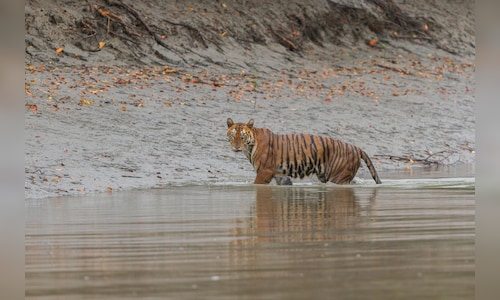“This seasonal closure coincides with the peak breeding period for both aquatic and terrestrial species,” stated Md Rezaul Karim Chowdhury, Divisional Forest Officer (DFO) of the Sundarbans East Forest Division, as reported by PTI. “By maintaining a tranquil forest during this timeframe, we can significantly boost breeding activities, particularly for aquatic species. If effectively enforced, this ban will lead to a thriving population of fish and wildlife in the forest.”
Officials have assured that forest patrols will be heightened during this period to prevent poaching and unauthorized entry. This initiative marks the third consecutive year of such closures and aligns with the Integrated Resources Management Plan (IRMP), which promotes sustainable conservation efforts in the region.
Also read | Monsoon tourism in Goa: Waterfalls under state Forest Development Corporation open for visitors
The Sundarbans, designated as a UNESCO World Heritage Site, stretches over 10,000 square kilometers across West Bengal and southern Bangladesh. As the largest mangrove ecosystem globally, it serves as a critical habitat for various species, including the Royal Bengal Tiger, estuarine crocodiles, and numerous migratory birds. The deltaic forest is also integral to carbon sequestration, coastal protection, and local livelihoods.
Forest officials stress that the seasonal ban is essential for the forest’s recovery and regeneration. The Sundarbans hosts 219 identified aquatic species along with diverse terrestrial wildlife, many of which depend on the early monsoon months for successful reproduction.
Nevertheless, the ban has intensified challenges for forest-dependent communities, particularly those involved in fishing, honey gathering, and crab harvesting. With no legal access to the forest until the end of August, thousands face income loss and insufficient support.
Also read | Cruise tourism in India booms: How travel insurance can safeguard your voyage
Although sea-going fisherfolk receive assistance from the Department of Fisheries during this time, similar support appears to be lacking for forest-based communities. As per the Shyamnagar Upazila Fisheries Office, of the 23,928 registered fisherfolk in the region, only 8,324 qualify for government aid. Each eligible household is entitled to 77 kilograms of rice over the three months, distributed in two installments. There have been reports of irregularities and potential corruption in both the allocation and distribution of relief supplies.

















